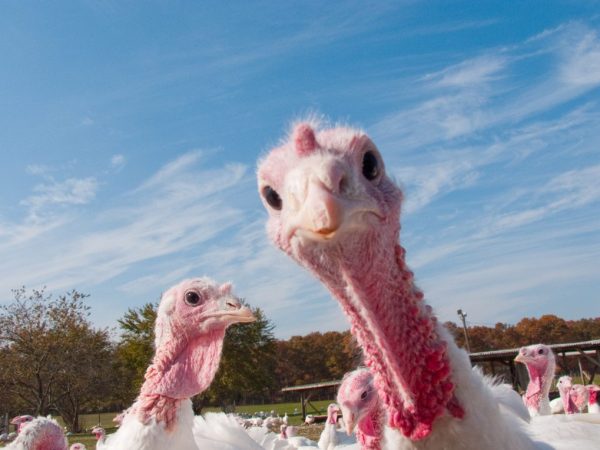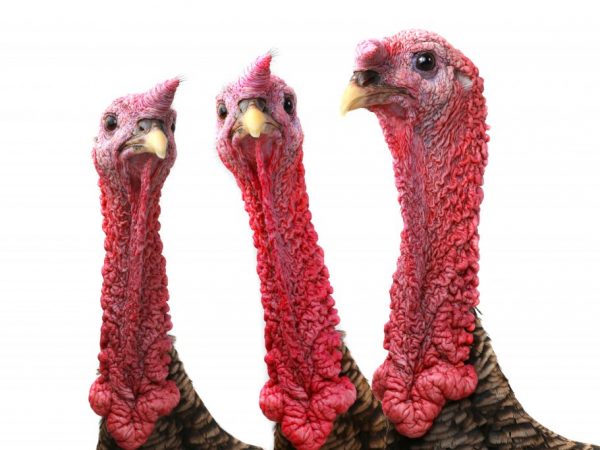Symptoms and treatment of histomonosis in turkey poults
Turkeys are considered the undisputed favorites for the amount of meat among poultry. However, despite their physical parameters, turkeys are also leaders in various diseases and infections. Small violations of sanitary standards lead to serious diseases in birds, due to which the meat becomes unusable. Among such diseases, histomoniasis can be distinguished. This ailment manifests itself with poor bird maintenance and is epidemic in nature. Histomonosis in turkey poults is especially dangerous, since the infection can destroy the entire brood from one clutch.

Symptoms and treatment of histomonosis in turkey poults
The causative agents of the disease and the causes of occurrence
Histomoniasis of poultry refers to diseases, the main cause of which is violation of sanitary standards and lack of prevention.
The bacterial pathogens are called Heterakis gallinarum. They are microscopic nematodes that actively spread in the body of an adult or eggs.
In the amoeba-shaped form, the bacteria are thirty micromillimeters in size, and the flagellate - up to 100 micromillimeters. Once in the body of a turkey, bacteria infect the liver and mucous membrane of the gastrointestinal tract.
Histomoniasis has two forms that affect the incubation period of the infection:
- Acute form. The ripening period lasts a week, after which death occurs within two to three days. The meat of turkeys that have had an acute form should be disposed of.
- Chronic form. The incubation period is one month. With this form of the disease, the bird is treatable if the individual has good immunity. Proper processing of the carcass allows the meat of sick individuals to be consumed, but the liver and kidneys should still be disposed of.
Histomoniasis of turkeys is especially dangerous among young animals, because turkeys do not have a strong immune system, and the disease is often acute.
There are many sources of this disease. The most common are:
- Infected feed.
- Keeping several species of birds in one room. Remember that chickens can also get histomoniasis, but they tolerate it more easily than turkeys.
- Dirty feeders and drinkers.
- Failure to comply with the rules for transporting poultry.
- Keeping individuals of different age groups in one turkey house.
- A large number of birds in a tight enclosure.
In addition to improper transportation or housing conditions, there are also living vectors of diseases. Among them, one can especially distinguish:
- Adults who have had histomonosis.
- Harmful insects.
- Earthworms or common beetles that a turkey can eat while walking.
In addition, histomonads can inhabit the inventory that was used to clean the infected poultry house. After such cleaning, all instruments should be thoroughly disinfected.
Chickens can become carriers of the disease, ducks and geesetherefore turkeys should be kept away from these birds.Remember that histomoniasis in chickens and ducklings goes away more easily due to strong immunity, while young turkeys may die.
Symptoms of the disease
The problem with infection is that histomoniasis has symptoms that are characteristic of many diseases... Therefore, in many cases, the disease is established using laboratory analysis. However, the disease still has certain symptoms.
With a disease with such an infection, the general well-being of the bird first of all worsens.
Turkeys stop eating and move actively, feathers take on a disheveled look, the animal often drinks a lot. Turkey poults may voice their voices in an attempt to attract attention.

The turkeys are screaming loudly
The next characteristic feature of histomonosis in turkeys is loose stools... The litter has a greenish or brown color, the plumage under the tail sticks together from the secretions. The body temperature drops by a couple of degrees.
These symptoms last two weeks, after which the turkey may get better.
If there are turkeys on the farm with similar problems, then you should immediately contact a specialized clinic. At an early stage, histomonosis in birds is easily treated, but in a neglected state, the turkey can only be slaughtered. In addition, this infection spreads very quickly throughout the farm - in one week, histomonosis can affect all poultry.
When carcasses are opened, an enlargement of the cecum with the affected mucosa can be detected. Also, the disease affects the liver - the organ looks enlarged and has gray foci of necrosis. The body of a dead turkey is usually emaciated and the scalp is dark in color. Because of this feature, the common people call the disease "Black Head". The plumage of the bird loses its brightness of colors and often breaks off.
Methods for the treatment of histomonosis
Histomoniasis in turkeys requires surgical treatment, since it quickly captures all the poultry on the farm. If the foci of the disease are not destroyed in time, then most of the young animals may die. First of all, infected individuals should be deposited in a separate enclosure and preventive treatment should be carried out in all healthy birds.
At the first symptoms of the disease, medications should be used. Veterinary specialists distinguish among effective drugs for histomonosis furazolidone and metronidazole... These drugs are aimed at removing infectious bacteria from the turkey's body. Metronidazole excretes histomonads for several days, after which the bird is given special care to recover from the effects of the infection. Turkeys are usually given special preparations to restore the stomach and liver.
Some doctors prescribe medications such as osarsol. This agent is added to turkey feed within a week. It is also used as a prophylaxis for histomonosis.
There are several more drugs that will help in the fight against this disease:
- Trichopolus - mix with feed in a ratio of five hundred grams to one ton.
- Dimetridazole - one hundred grams per ton of feed.
- Emtril - one hundred twenty-five grams per ton of feed.
- Nitazol - one percent of the feed volume. The treatment lasts five days.
- Emgal - one gram for one turkey.
- Histolgon - two tenths of a percent of the feed volume.
You should consult your veterinarian before using medications. Avian histomoniasis disrupts the gastrointestinal tract. Therefore, during the period of illness, turkeys should be given the following complementary foods:
- yogurt;
- alfalfa;
- nettle;
- serum;
- green onions.
This will help remove most of the bacteria and restore the liver, stomach lining and intestines. Remember that drugs only affect the causative agent of the disease and will not help to restore the internal organs.
Bacteria of histomonosis can be found in the eggs of the worms, therefore, before treating the main infection, the internal parasites in the bird should be eliminated. In the fight against worms, the drug phenothiazine will help, which is added to wet food in proportions of one gram per kilogram of live weight. The medicine is given to turkeys for 1-3 days.
In parallel with the treatment of histomonosis in birds, a set of disinfecting measures should be carried out, otherwise the infection will continue to infect turkeys:
- Turkey poultry, inventory and walking enclosure should be thoroughly treated with a solution of soda ash or special disinfectants.
- The droppings of infected turkeys are burned. It cannot be used as fertilizer.
- A walk for turkeys must be dug up, then covered with lime and treated with a carbonate solution.
If you do not follow a number of these steps, then the treatment of birds will be useless - the turkeys will again become infected with bacteria in their own poultry house. To avoid histomoniasis of turkeys and expensive treatment, disease prevention should be carried out.
Preventive actions
To avoid this unpleasant infection, you should adhere to the basic rules for keeping poultry and take complex measures. Prevention of histomonosis includes:
- Compliance with the poultry feeding regime and sanitary standards for keeping.
- Separation of chicks from adults and separate keeping of young.
- The turkey house should be built on the basis of calculations of three square meters per individual.
- The turkey house should have a stable temperature and humidity level;
- They will not allow turkeys to communicate with other poultry, since chickens and ducks can carry histomonosis.
- In winter, the house should be equipped with additional light sources.
- The diet of turkeys should include vitamin mineral supplements, as well as all types of feed.
- Once every three months, osarsol and histolgon are given to the entire livestock along with feed.


